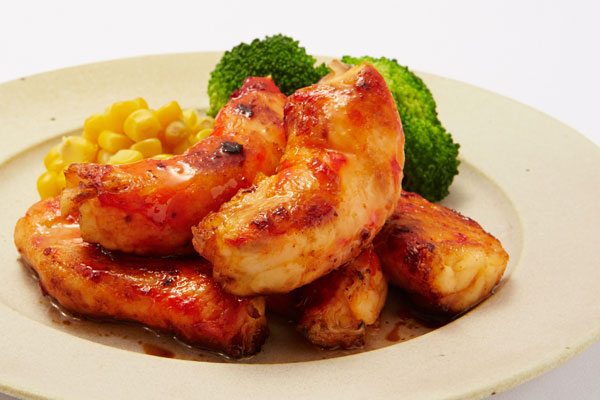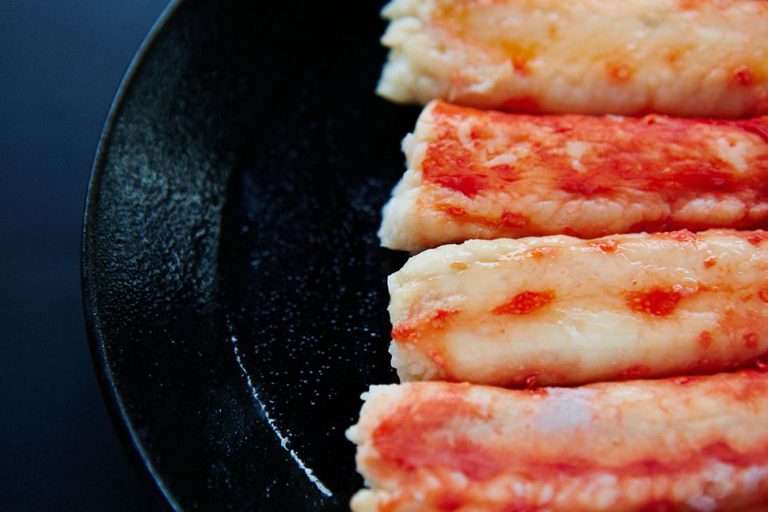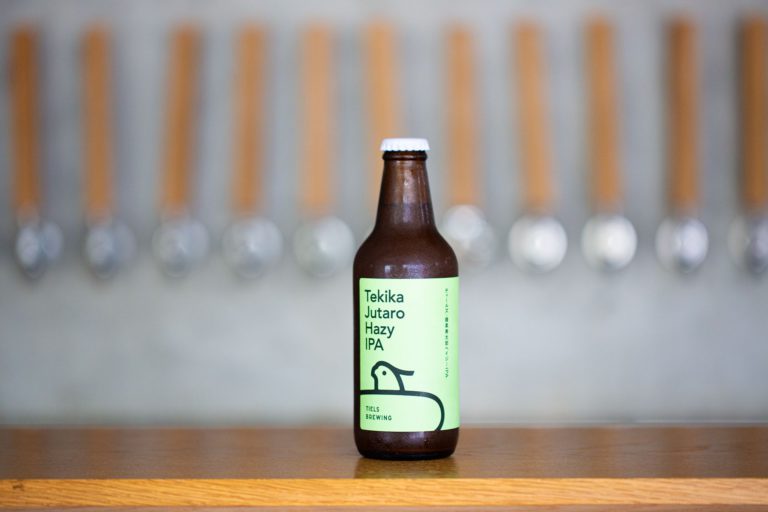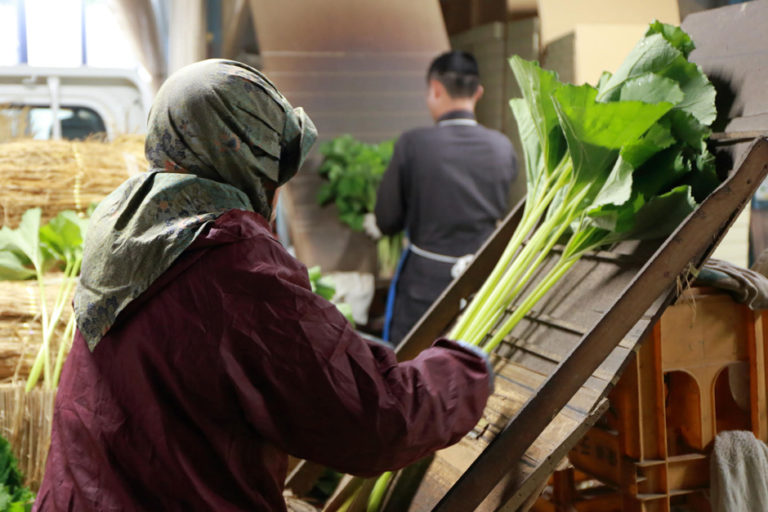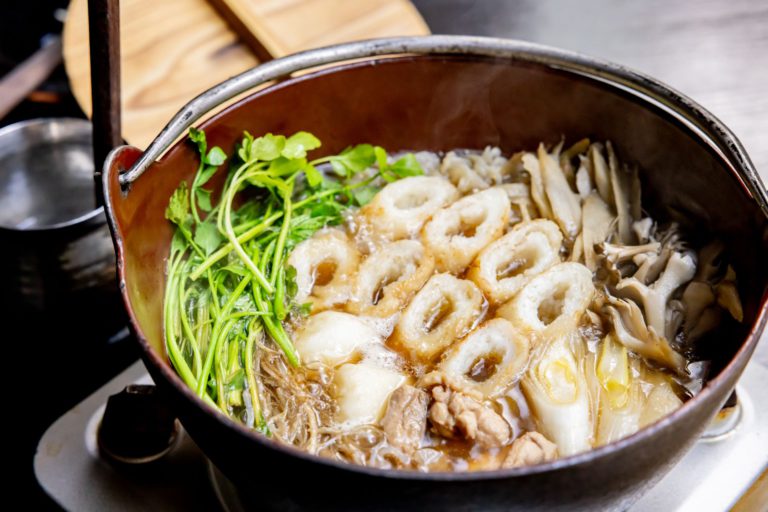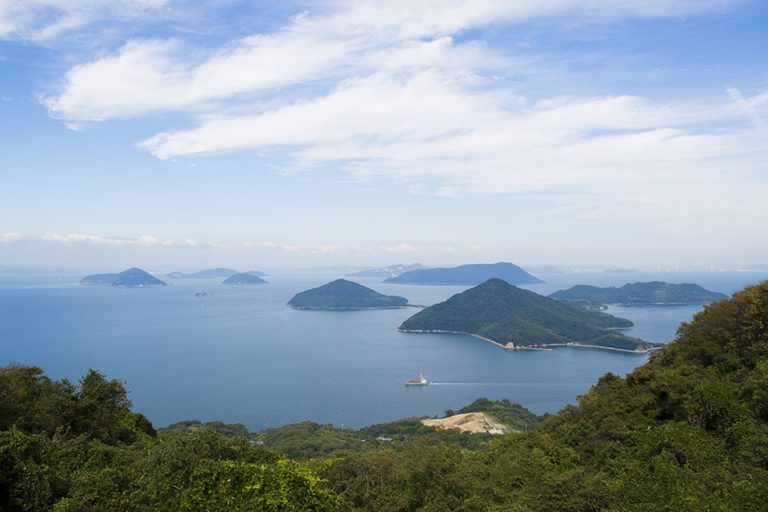The flavor of fresh crab in season, perfectly preserved in a can
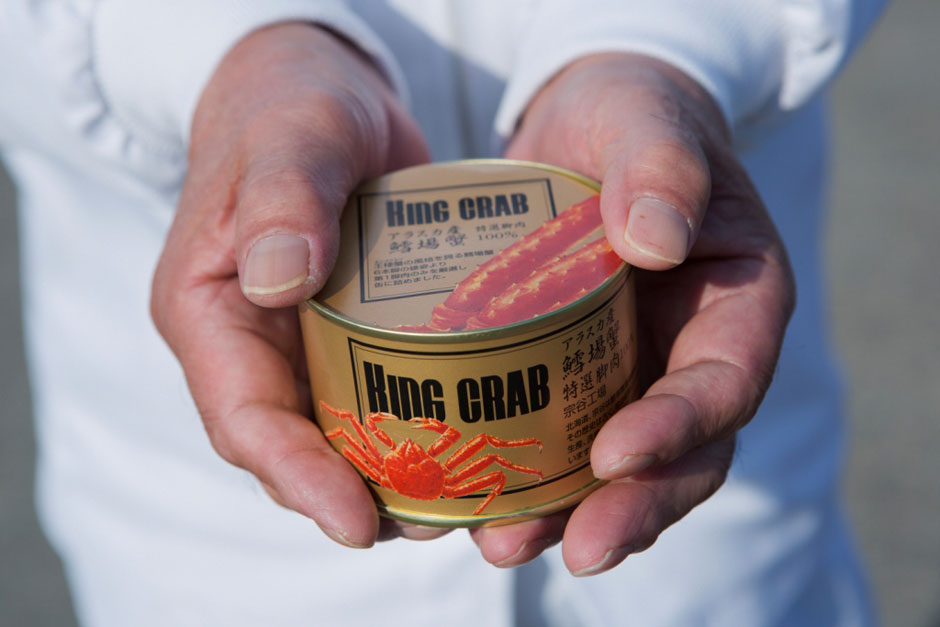
The solution is canned crab, which seals in the seasonal freshness so that you can enjoy the delicious flavor of crab meat at any time of the year.
The Maruha Nichiro Northern Japan Soya Cannery, located in the town of Wakkanai in northern Hokkaido, is equipped with the latest Japanese canning technology specifically for crab meat. At the time of our visit, they are processing the premium product known as Canned Alaskan King Crab Leg Meat. King crab is extremely rare with a limited harvest season. As the name implies, this premium product features exclusively the first leg, which is the tastiest part of the crab.
Maruha Nichiro knows how to capture the seasonal goodness of king crab
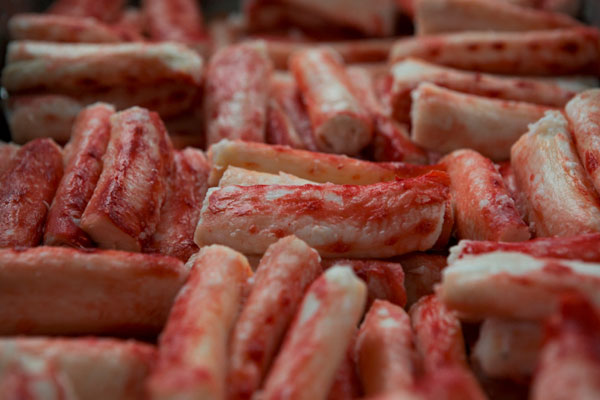
The Maruha Nichiro Northern Japan Soya Cannery uses crab meat from the first leg of the high-grade king crab caught in Bristol Bay in the U.S. state of Alaska, where stringent fishing regulations are enforced and the fishing season is limited to a single month during the October-November period. This product seals in a can the seasonal goodness of large, thick crab flesh, and it has proven to be one of the most popular lines from Maruha Nichiro. In addition to the relative scarceness of the king crab variety, there is a delicious sense of luxury in a product that confines itself exclusively to the tastiest section of the crab. Each leg in the can is generously proportioned, with the tightly packed fibers providing a wonderful texture and freshness. It certainly is worthy of the premium product label.
Chopped finely by experienced workers
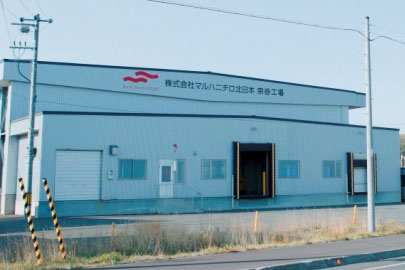
Wakkanai is an established north sea fishing port with operations extending 200 miles out to seal to the boundaries of the exclusive economic zone. It is also home to a flourishing seafood processing industry. Hokkaido harvests bigger volumes of crab than any other prefecture in Japan, and has built up a substantial crab canning industry complete with intellectual capital. Today, Hokkaido’s canning plants are among the most advanced in the world.
Soya Cannery was launched in 1945 via a merger of several smaller canneries operating in Hokkaido. The Wakkanai region boasts an established seafood processing industry that has long provided employment for many people. Today, the industry boasts the latest production technology as well as a highly skilled and dedicated workforce, some of whom are said to be approaching 70 years of age.
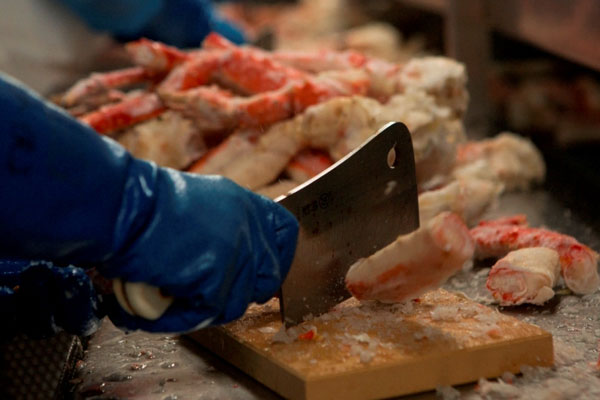
The very first process involves chopping up the crab into sections. Because of their complex shape, crabs are not suitable for machine cutting, so this process has to be performed manually by experienced workers using large hatchet-style knives. They work with incredible speed and impressive accuracy. As soon as the conveyor starts up, the knives start to descend upon the approaching crabs. The factory rings out with the agreeable sound of steady rhythmic chopping as the crabs are steadily dissected into their constituent parts.In addition to cutting the crab into sections, the workers also remove the joints between the leg sections. According to the factory manager, Mr. Nakagawa, if the joints aren’t removed the crab meat can be discolored in the can. The trick is not to remove more flesh than necessary, which would be a waste of the delicious meat.
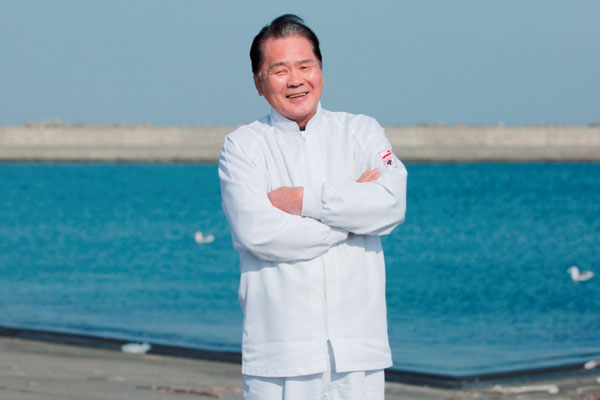
“With today’s technology could automate the process to some extent,” says Nakagawa, “but crabs tend to vary a great deal in terms of both size and shape, and I don’t think the machines are very good at working that out and making the right cuts at the required speed. Trained workers are always going to be faster and more accurate than a machine.” Despite increasing automation in the food processing industry, there is always a place for human experience and expertise. Canned Alaskan King Crab Leg Meat from Maruha Nichiro in particular is a product that is lovingly crafted by the hands of highly skilled workers with many years of experience.
Advanced and innovative canning system
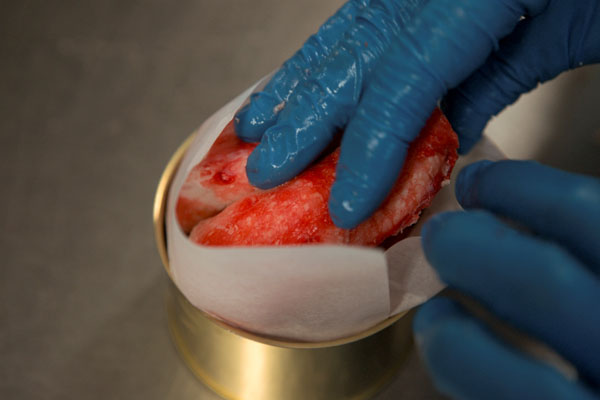
At the Soya Cannery, great importance is placed on the presentation of the product in the can. In order to maximize the visual impact when the can is opened and protect the beautiful red king crab meat from damage, the contents are carefully wrapped in a special paper sheet. Each can is packed by hand. The delicate crab pieces are folded carefully using a special technique developed by Maruha Nichiro. Watching the workers performing their craft is like watching artisans producing traditional handicrafts.
Once sealed, the cans are transferred to the sterilization pot. The Soya Cannery undertook extensive testing to determine the optimum water temperature and time to achieve the required level of sterilization while preserving the authentic texture of crab meat in the can. The sterilization F number at Soya Cannery is 6 or more, well beyond the minimum of 4 required under the Food Safety Law. Thus, the product is very well sterilized while still retaining the delicious flavor of king crab.
Canned food is a common household convenience and part of everyday life. But our visit to the cannery demonstrates that the canning process is predicated on the skills of the workers and the importance of food safety. And this is what makes it possible to preserve the delicious authentic flavor of king crab for an extended period.
Delicious recipes for king crab leg meat
While delicious on its own, Canned Alaskan King Crab Leg Meat is a premium product that also tastes great in a variety of recipes. One such recipe is Japanese style king crab steaks.
First you extract the moisture from the crab meat to bring out the flavor, then coat the pieces in butter and soy sauce to accentuate the texture. Having been given this recipe, we decided to try it out for ourselves. The recipe is given below. So if you want to enjoy the wonders of winter luxury sealed in a can, why not try Canned Alaskan King Crab Leg Meat.

